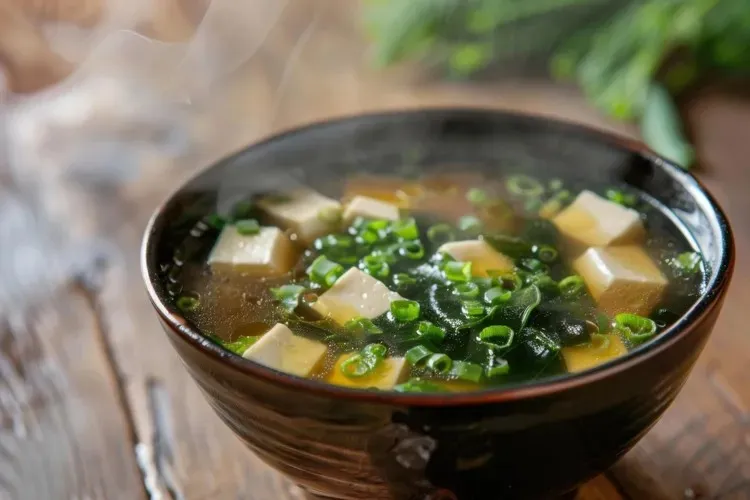What Is Umami? The Fifth Taste Explained
If you’ve ever enjoyed the rich depth of a simmering broth, the savory punch of Parmesan cheese, or the mouthwatering satisfaction of a perfectly grilled steak, then you’ve experienced umami - even if you didn’t know its name. Often described as “savory,” “meaty,” or “brothy,” umami is now recognized as the fifth basic taste, complementing sweet, sour, salty, and bitter.

What Is Umami?
Umami (pronounced oo-MAH-mee) is a Japanese term meaning “pleasant savory taste.” Japanese scientist Kikunae Ikeda identified umami in 1908 while studying kombu dashi, a seaweed-based broth. He found that its distinct savory flavor came from a naturally occurring amino acid called glutamate.
Umami describes a deep, satisfying savoriness commonly associated with foods like:
Broths and stocks
Aged cheeses
Mushrooms
Cured meats
Fermented sauces
This taste adds richness, depth, and fullness to dishes - what many chefs call “the flavor that makes food crave-worthy.”
The Science Behind Umami
Your tongue isn’t just tasting random sensations - it’s detecting specific chemical compounds. Umami is triggered by:
Glutamate (an amino acid found in proteins)
Inosinate (mostly found in meat and fish)
Guanylate (mostly found in mushrooms and plants)
Together, they activate specialized taste receptors known as T1R1/T1R3, which signal the brain that you’re consuming something rich in protein. Because protein is essential for survival, humans evolved to crave this savory taste.
Why Umami Feels So Good
When umami compounds bind to your receptors, the flavor doesn’t just hit your tongue - it also enhances mouthfeel and creates a sensation of “roundness” and satisfaction. This is why dishes rich in umami often feel warm, comforting, and deeply flavorful.
Umami vs. Salty: What’s the Difference?
Many people associate savory foods with salt, but salty and umami are not the same:
Saltiness comes from sodium ions and creates a sharp, instant taste.
Umami comes from glutamates and nucleotides and delivers a slower, deeper, longer-lasting sensation.
Salt can make food taste brighter, but umami makes food taste richer and more complete.
Top Natural Sources of Umami
Umami occurs naturally in a wide variety of foods, especially those that are aged, fermented, dried, or cooked slowly - processes that break down proteins into accessible glutamate.
High-Glutamate Plant Foods
Tomatoes (especially sun-dried)
Mushrooms (shiitake, porcini, maitake)
Seaweed (kombu, wakame)
Green tea
Soy-based foods like miso, soy sauce, and tempeh
High-Glutamate Animal Foods
Aged cheeses (Parmesan, Gruyère, aged cheddar)
Cured meats (prosciutto, bacon, jamón)
Sardines, anchovies
Foods Rich in Nucleotides
These compounds amplify umami when paired with glutamates:
Dried shiitake mushrooms (guanylate)
Bonito flakes (inosinate)
Meat, poultry, seafood (inosinate)
The Synergy Effect
One of the most fascinating things about umami is how dramatically it intensifies when glutamate and nucleotides combine. This “umami synergy” can make a dish taste up to eight times more savory.
Famous examples include:
Tomatoes + cheese
Kombu + bonito flakes (in Japanese dashi)
Mushrooms + beef
Soy sauce + grilled foods
Umami and MSG: What’s the Connection?
MSG - monosodium glutamate - is simply a concentrated form of natural glutamate, the same compound responsible for umami in foods like tomatoes and Parmesan cheese.
Key facts:
MSG is one of the most researched food ingredients in the world.
Scientific consensus agrees MSG is safe for the general population.
Using MSG can help increase flavor while reducing overall sodium intake.
MSG isn’t artificial; glutamate is found naturally in thousands of foods.
How Umami Enhances Cooking
Umami is beloved by chefs because it:
Adds complexity and depth
Balances and rounds harsher flavors
Makes dishes taste more satisfying
Enhances aroma and mouthfeel
Helps reduce the need for excessive salt
In other words, umami doesn’t just add flavor - it improves the entire eating experience.
How to Add More Umami to Your Cooking
You don’t need fancy ingredients - many umami boosters are everyday staples.
1. Use Fermented Seasonings
Fermentation naturally breaks proteins into glutamate. Examples include:
Soy sauce
Fish sauce
Worcestershire sauce
Miso paste
Kimchi or sauerkraut juice
2. Cook With Mushrooms
Fresh mushrooms are great, but dried ones are even better. Dried shiitakes, in particular, are umami bombs.
3. Brown and Roast Your Food
The Maillard reaction - the browning of meat, onions, and bread - creates savory compounds that amplify umami.
4. Use Aged and Cured Foods
Aged cheeses and cured meats deliver instant depth.
5. Pair Foods for Maximum Synergy
Combine glutamate-rich and nucleotide-rich ingredients:
Parmesan on pasta or pizza
Diced mushrooms in burgers
Tomato-based sauces with anchovies
Dashi made with kombu and bonito
Umami Around the World
Though the term “umami” originated in Japan, the taste is universal. Most global cuisines rely on umami-rich ingredients, such as:
Japanese Cuisine
Dashi
Kombu
Soy sauce
Miso
Italian Cuisine
Parmesan
Tomatoes
Anchovies
Cured meats
Chinese Cuisine
Fermented bean pastes
Dried mushrooms
Brothy soups
Southeast Asian Cuisine
Fish sauce
Shrimp paste
Fermented vegetables
American Cuisine
Grilled meats
Burgers and cheese
Ketchup
Umami is everywhere - it’s the backbone of delicious food across cultures.
Health Benefits of Umami
Emerging research suggests that umami may offer several benefits:
1. Reduced Sodium Intake - Because umami naturally enhances flavor, it allows for flavorful dishes with less salt.
2. Increased Satiety - Protein-rich and umami-heavy foods tend to make you feel full for longer.
3. Better Digestion - Umami stimulates saliva and digestive juices, preparing the body to break down protein efficiently.
Is Umami a Taste or a Flavor?
It’s both - depending on the context.
Taste: Umami is a basic taste, detected on the tongue.
Flavor: When combined with aroma, temperature, and texture, umami helps create complex, memorable flavors.
How to Recognize Umami in Food
Foods high in umami have qualities like:
A savory, mouth-coating feel
A brothy or meaty depth
A long-lasting flavor
A balanced, rich finish
If a food makes your mouth water and your brain say “more, please,” it probably has umami.
Why Understanding Umami Matters
Umami is more than just a trendy culinary term - it’s a fundamental taste that shapes how we experience food. Recognizing and using umami allows home cooks and chefs alike to:
Build richer, deeper flavors
Make healthier meals with less salt
Create more satisfying dishes
Understand why certain ingredients taste incredible together
Once you master umami, your cooking will never be the same. It’s the secret to transforming good dishes into unforgettable ones.
Common FAQs About Umami
Is umami the same as salty?
No - salty is sharp and immediate. Umami is rich, deep, and long-lasting.
Is umami vegetarian or vegan?
Absolutely. Many plant-based foods, like tomatoes, miso, and mushrooms, are umami powerhouses.
Is MSG safe?
Yes. Decades of scientific research have found MSG safe for the general population.
Can you taste umami alone?
Pure glutamate doesn’t taste great on its own, but when combined with other flavors, it becomes delicious.









